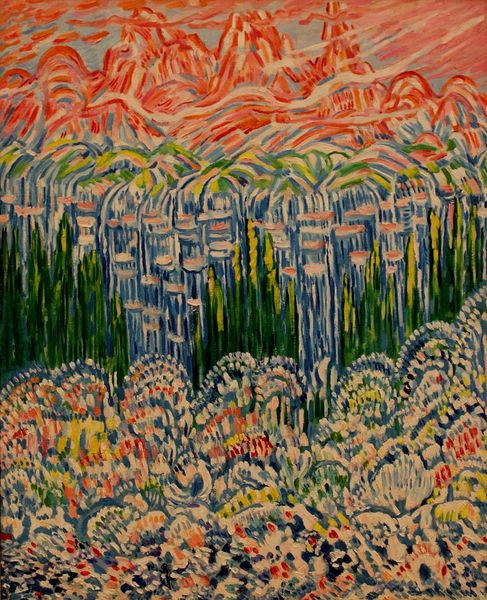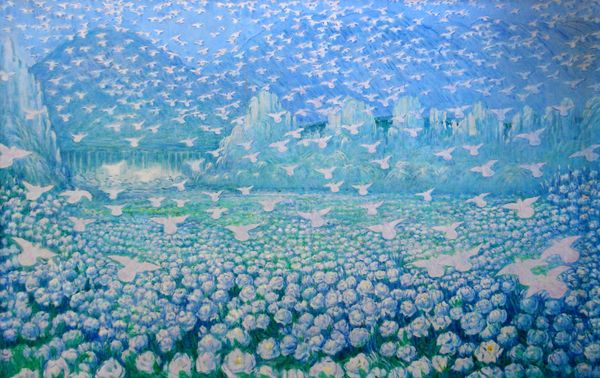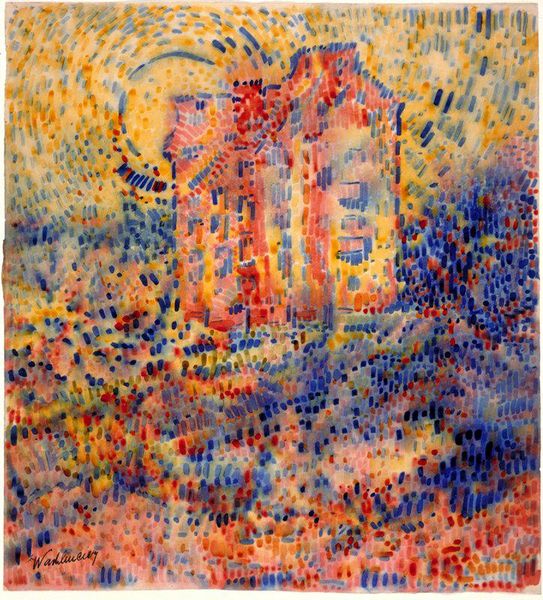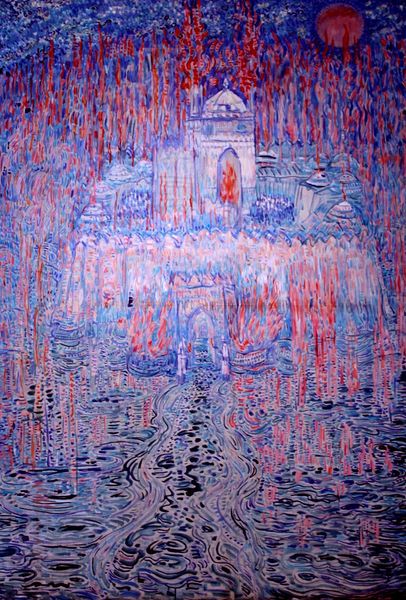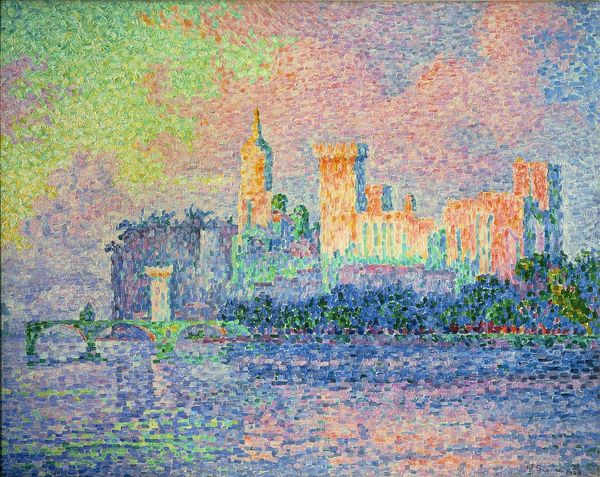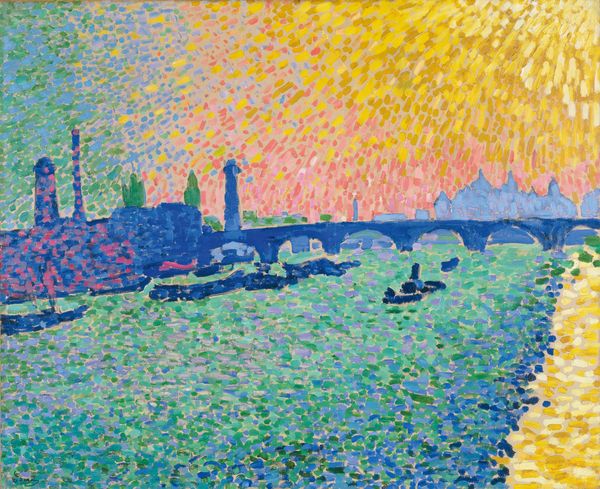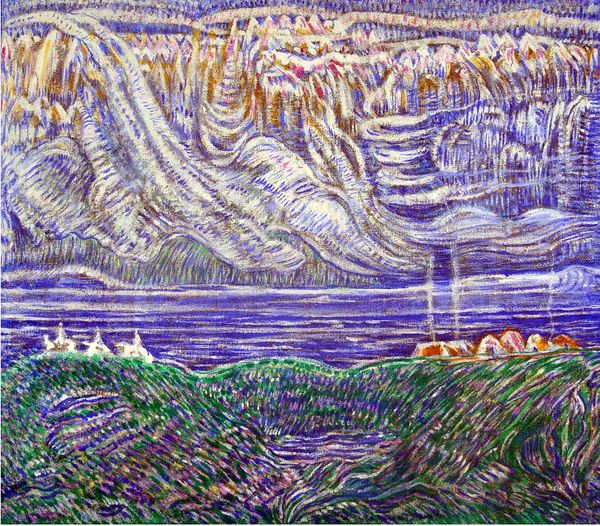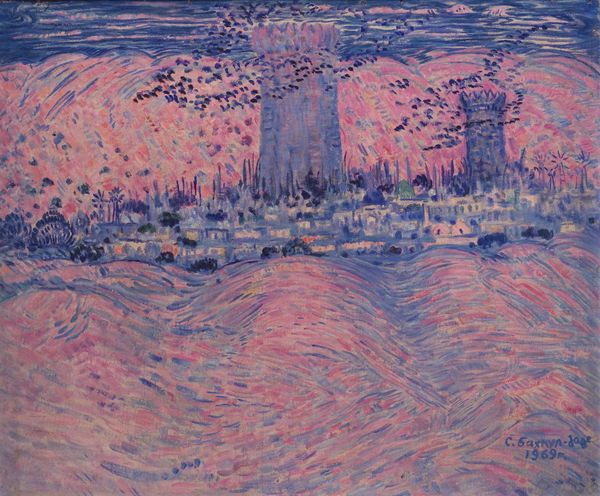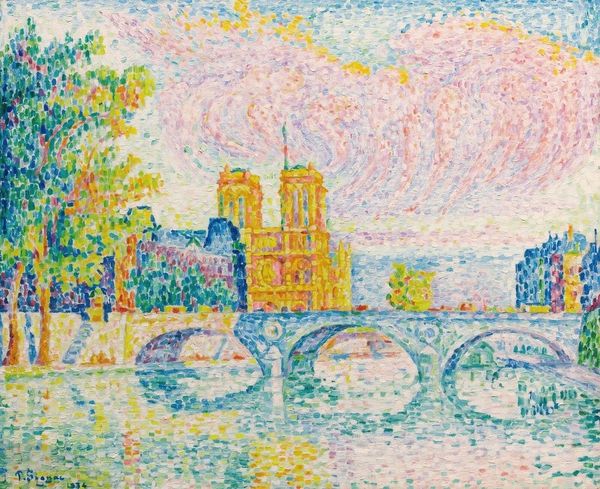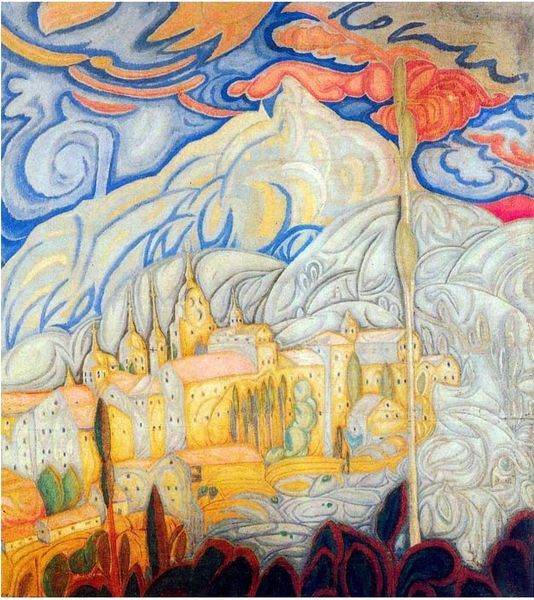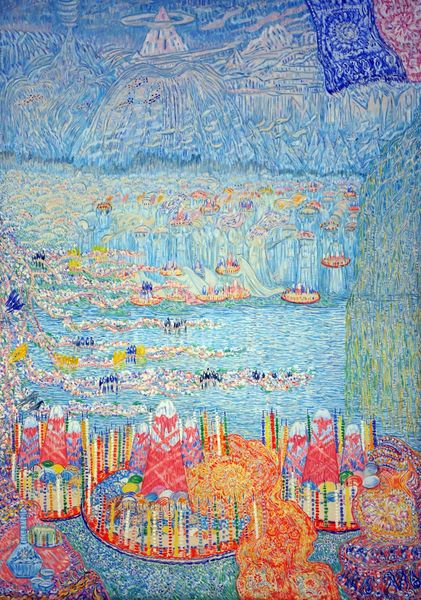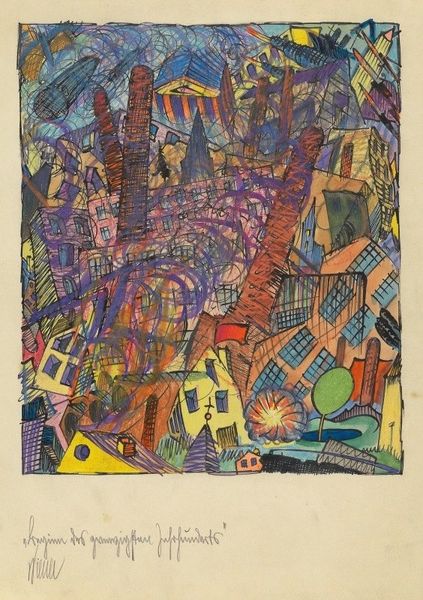
Dimensions: 102 x 100 cm
Copyright: Sattar Bahlulzade,Fair Use
Curator: We are looking at Sattar Bahlulzade's "Caspian Coast," painted in 1971. The work uses acrylic paint. Editor: What immediately strikes me is its almost otherworldly luminescence. The texture is incredible. The materiality is all encompassing. Curator: Absolutely. Bahlulzade’s landscapes, particularly those done in this abstract style, are really a rejection of the Soviet-approved Socialist Realism. The use of vivid colors and expressive brushstrokes directly contrasts that aesthetic, so it makes me wonder what the art production was like then, given these differences in expression. Editor: This departure from realism, it's rooted, I think, in the material properties of the acrylic he was using. Look at how he layers the colors, building up a tangible surface. The work transcends mere representation; it's a physical record of the labor of its making, but I agree on that cultural revolution against Socialist Realism because it would've shaped everything and its material nature. Curator: Indeed. Considering Bahlulzade's background, living under Soviet rule in Azerbaijan, these landscapes become a subtle, yet powerful, form of cultural and political commentary, as he subtly alludes to a sense of national identity by diverging from common aesthetics. How are we meant to consider land and territory through a cultural lense? Editor: The repetition of brushstrokes, the density of the paint itself – these speak to the almost industrial process he undertook. He's not just depicting a scene, he's constructing a new visual language, rooted in the potential of the medium. There seems to be an entire consumption process within the context of his artwork, beyond paint! Curator: Exactly. Bahlulzade uses this tension to hint at the complexities of identity and place, questioning official narratives through the sheer exuberance of his palette and form. In this piece we have themes of landscape, abstraction, and abstract expressionism all being influenced by such constraints in Azerbaijan. Editor: It's an important piece in understanding artistic creation in a state with political suppression and the role materials played in that liberation. The physical artwork becomes an act of defiance. Curator: And it offers an incredible, unique interpretation that asks for a deeper questioning into cultural identity and place within national history.
Comments
No comments
Be the first to comment and join the conversation on the ultimate creative platform.
